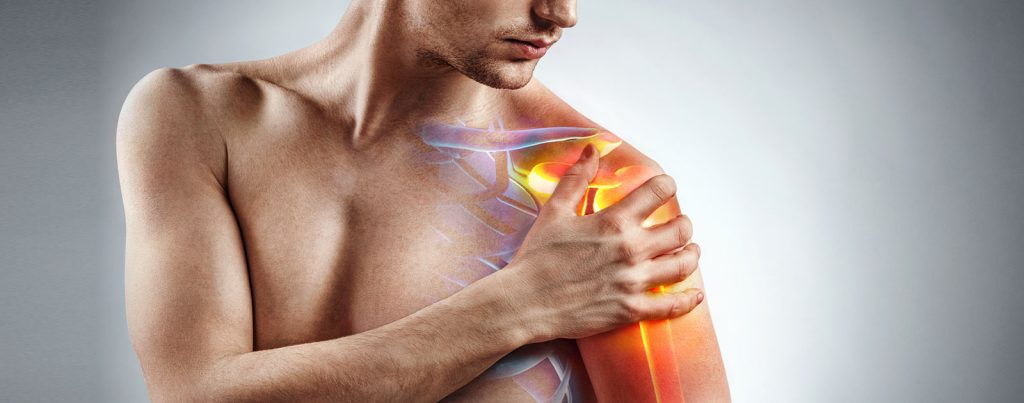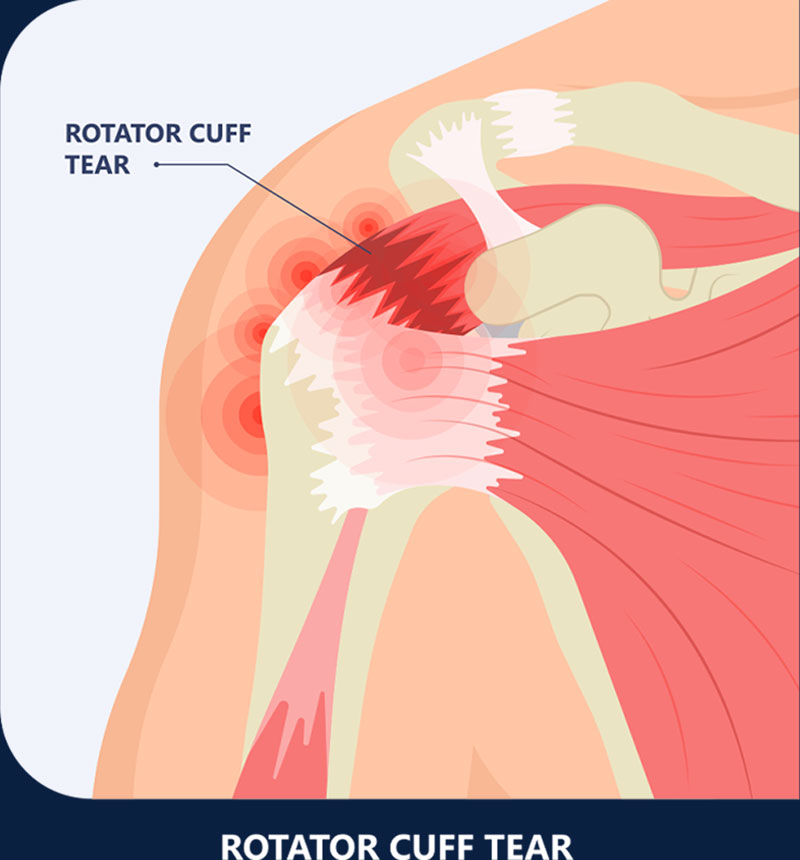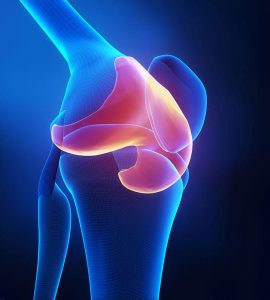What is the Rotator Cuff?
The shoulder is made up of three bones: the humerus (upper arm bone), scapula (shoulder blade) and clavicle (collarbone). The rotator cuff is an important group of muscles and tendons in the shoulder that not only holds the shoulder joint in place (by forming a covering over the top of the humerus), but also allows you to raise and rotate your arms.

What is a Rotator Cuff Tear?
A rotator cuff tear is one of the most common types of rotator cuff injury in Singapore. It occurs when the tendons pull away from the arm bone; and it may result from either injury (such as a fall) or degradation (such as ageing or overuse).
Rotator cuff tears that occur suddenly due to an injury, tend to be very painful. You may experience a snapping sensation and immediate weakness in the upper arm.
On the other hand, rotator cuff tears that occur due to degradation happens gradually; and the pain may initially be mild and only present when lifting your arm over your head.
Notice symptoms of a rotator cuff tear? Don’t ignore them.
Get assessed by an orthopaedic specialist at 8028 4572 today.

What are the Types of Rotator Cuff Tear?
Partial Tear:
- The tendon still partly attaches to the upper arm bone (humerus)
Complete Tear:
- The tendon is fully separated from the bone with a hole or rip in the tendon
What are the signs and symptoms of Rotator Cuff Tear?
- Limited ability (due to pain and weakness in the shoulder) to move the arm
- Pain that worsens with overhead arm movements
- Pain at rest and at night, especially when lying on the affected shoulder
- Crackling sounds when moving the arm
Early diagnosis and treatment improve recovery outcomes for rotator cuff tears.
Schedule a consultation with Dr James Tan at 8028 4572.
How is it Diagnosed?
- Your doctor will first discuss your rotator cuff injury symptoms and medical history in detail
- This will be followed by a physical exam to check for range of mobility and strength of the shoulder
- Your doctor may check for other problems to ensure that that the pain is not due to things like referred pain from a pinched nerve in the neck or other conditions like arthritis
- Your doctor may also arrange for imaging tests to be conducted (such as an X-ray or MRI scan) to confirm the diagnosis
Don’t risk chronic shoulder pain, weakness, and stiffness.
Explore treatment options with our orthopaedic specialist at 8028 4572 today.
Treating Rotator Cuff Tears
Rotator cuff injury treatment in Singapore is determined by the mechanism of the tear (caused by degeneration or trauma), the activity level and age of the patient, as well as the characteristics of the tear.
Conservative Treatments
In most cases, physiotherapy and non-surgical treatments are recommended first.
Non-surgical methods may not heal the tear per se, but most patients find that their function improves and pain decreases with these treatments alone. These include:
- Rest and immobilisation
- Physiotherapy
- Activity modification
- Nonsteroidal anti-inflammatory drugs
- Steroid injections
Surgical Treatments
In some cases where the tear is too severe or non-surgical treatments have proved insufficient, rotator cuff repair via surgery may then be recommended.
Rotator cuff repair generally involves re-attaching the tendon to the head of the humerus (upper arm bone). A partial tear may require a trimming or smoothing procedure, known as debridement. A complete tear is repaired by stitching the tendon back to its original position on the humerus.
Your orthopaedic surgeon will discuss with you the best treatment method for your individual needs.




